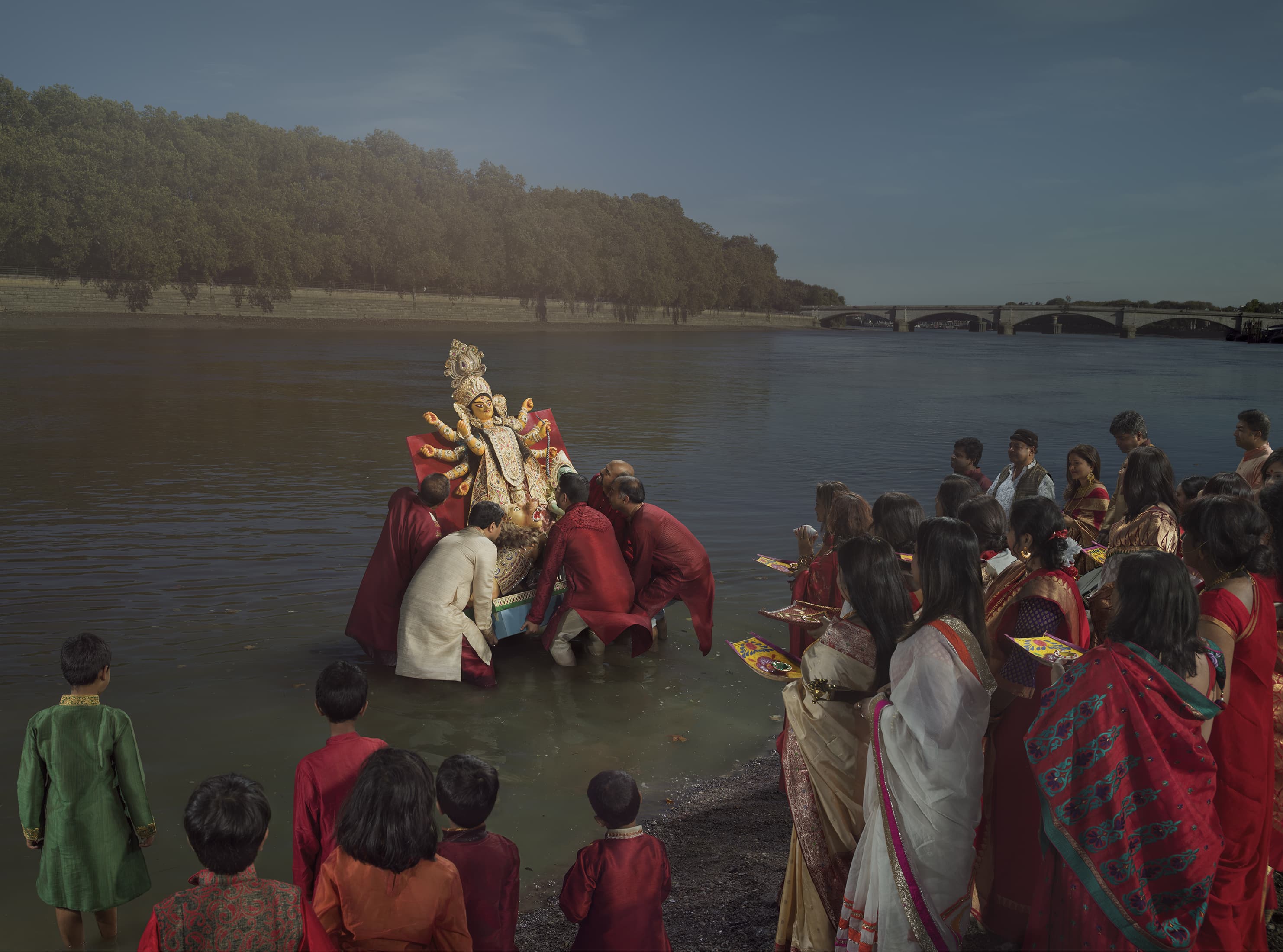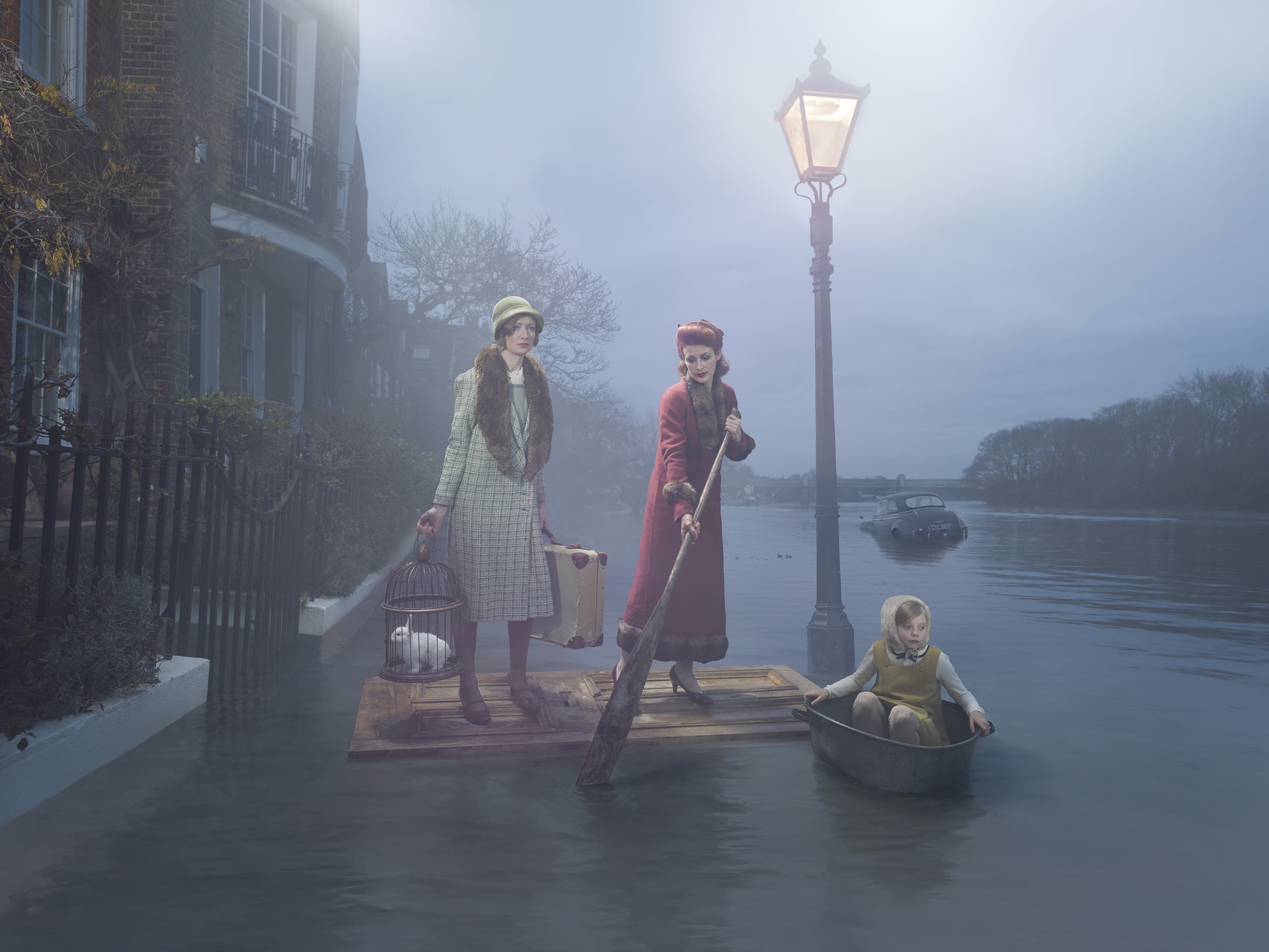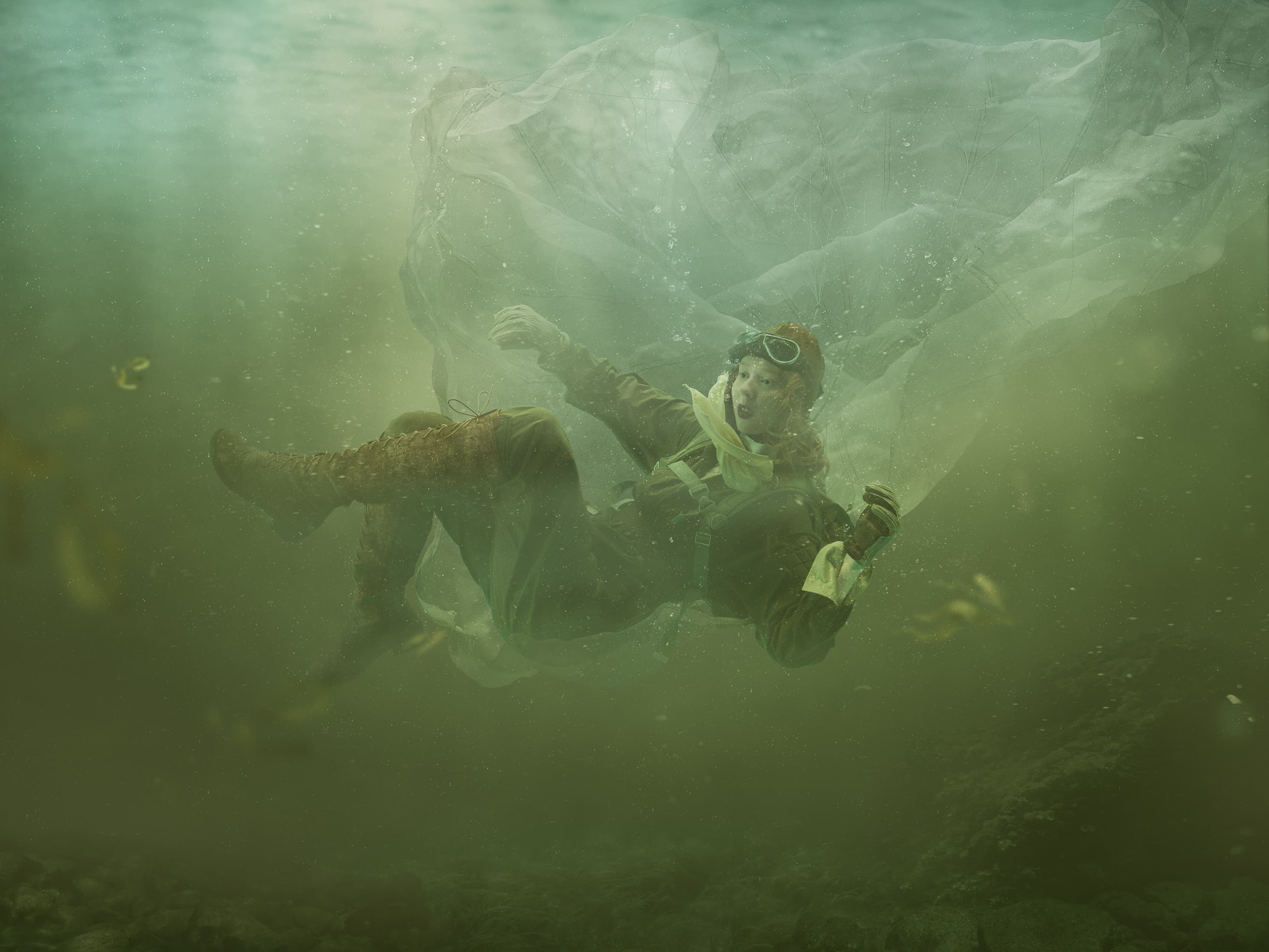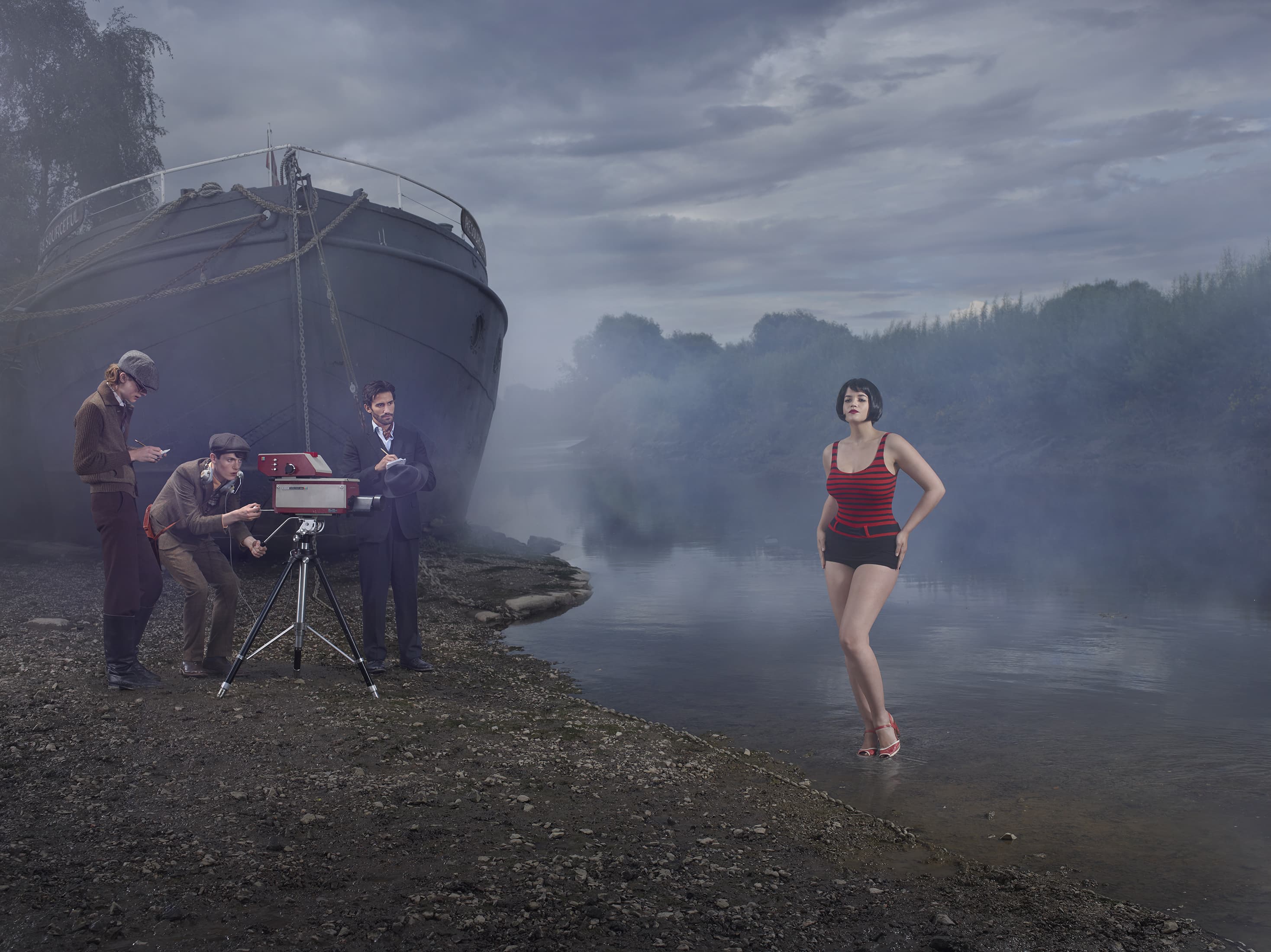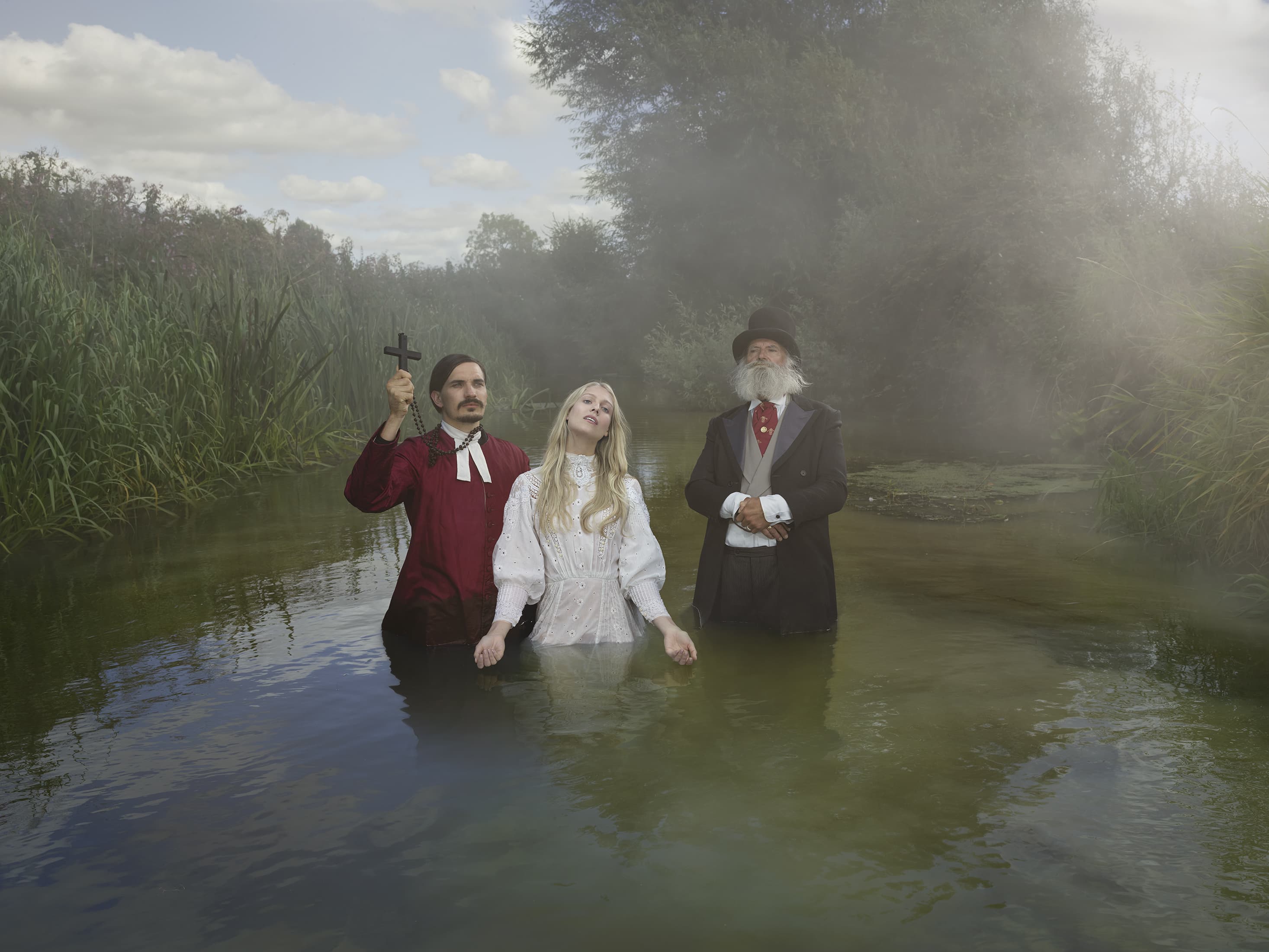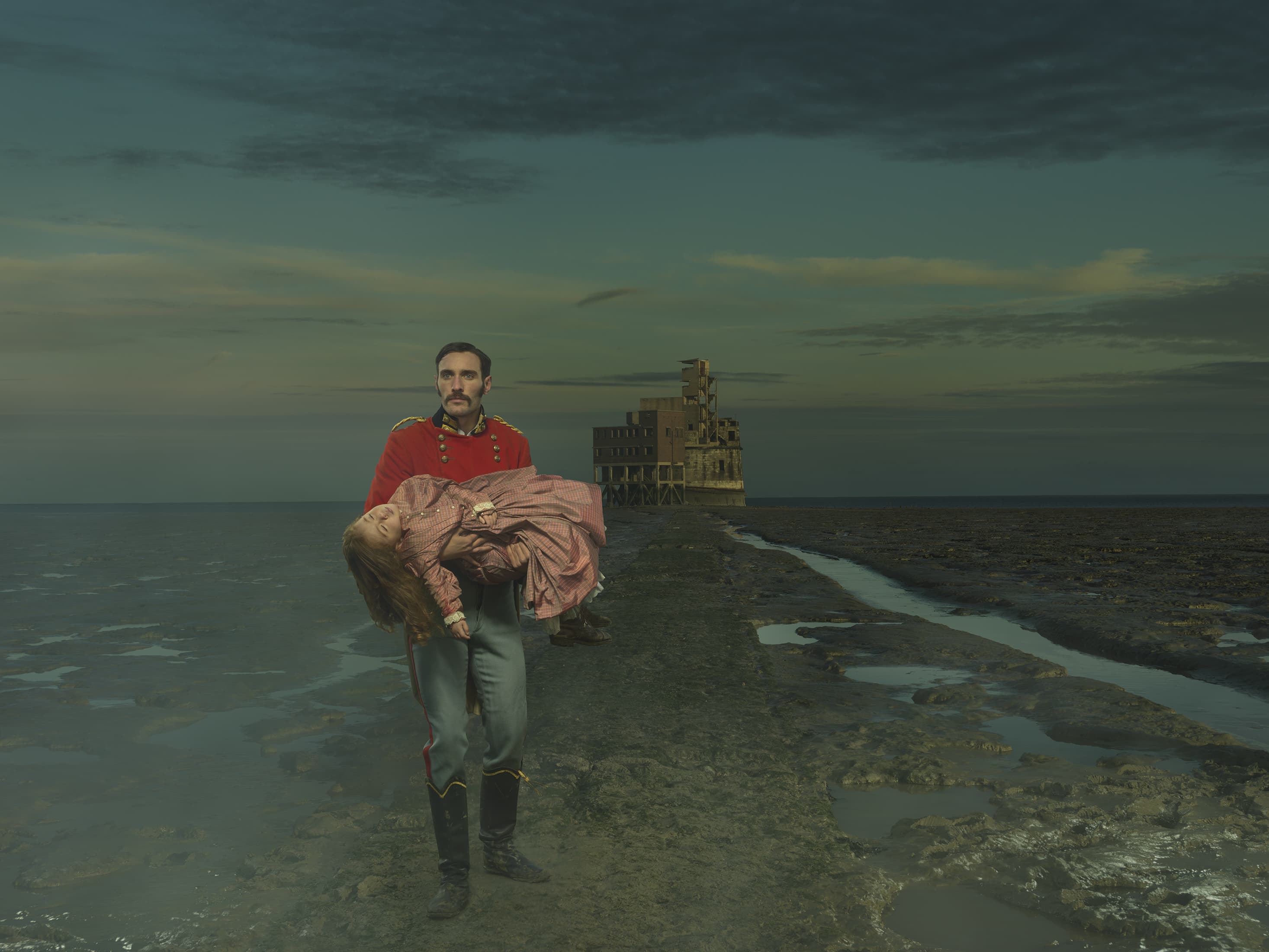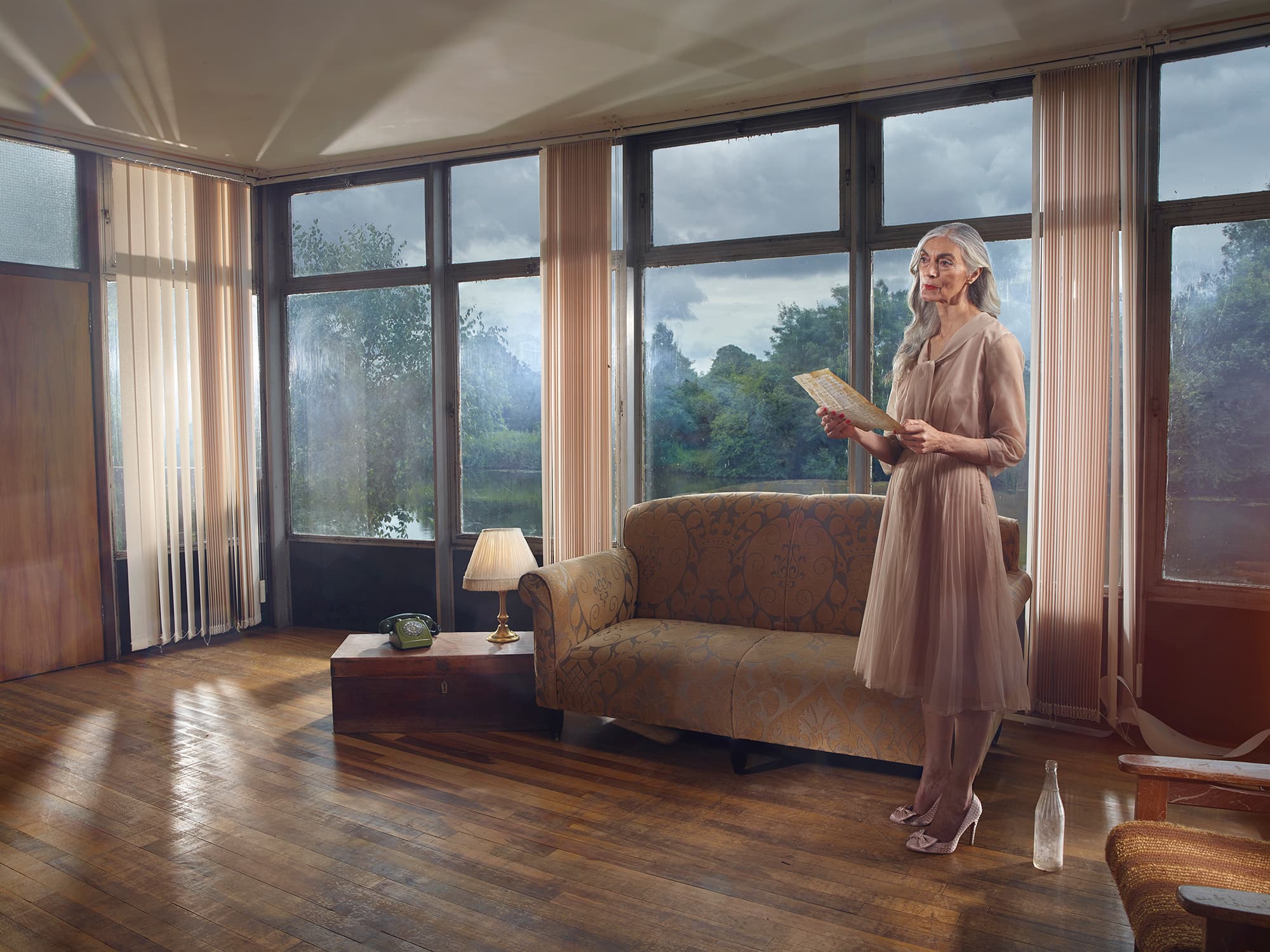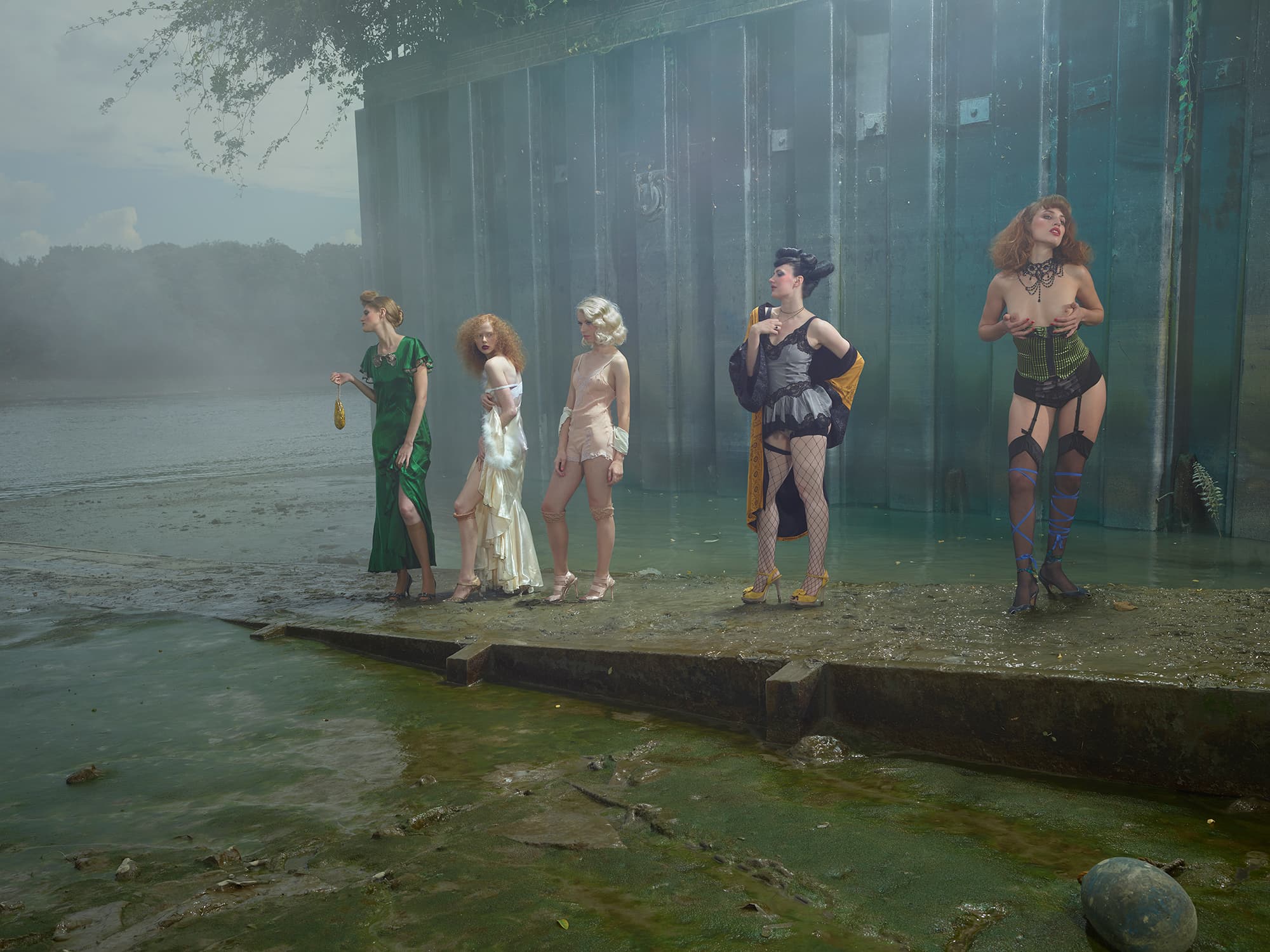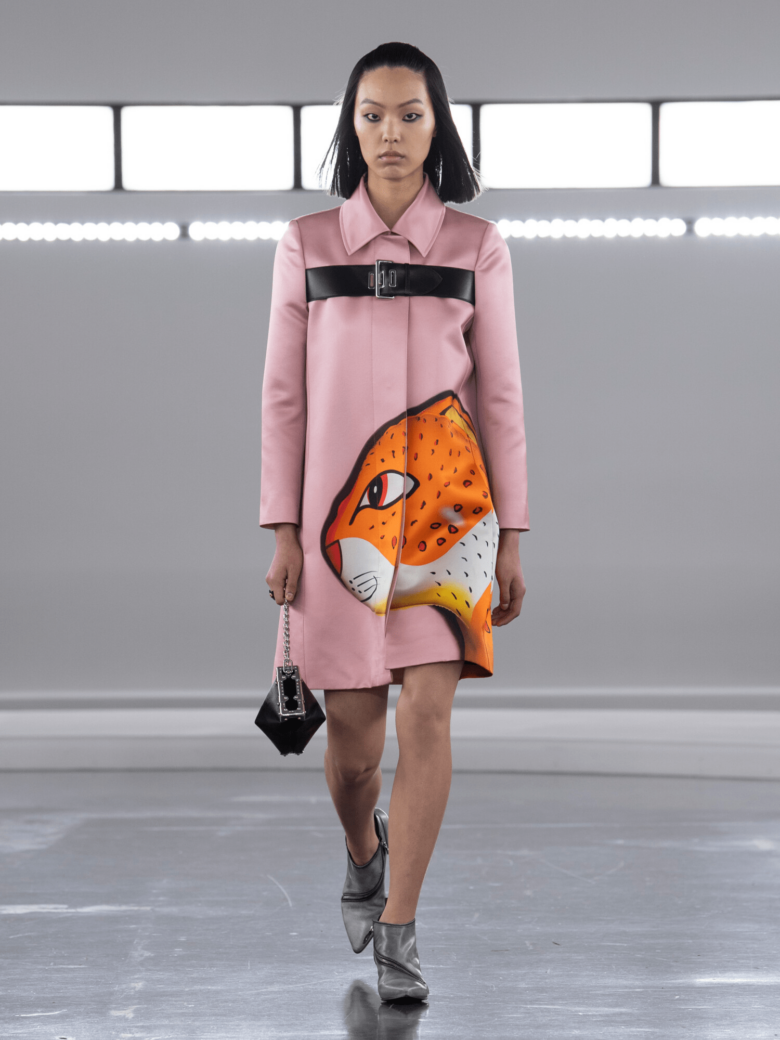Exploring the history and mysticism of the River Thames in photography
“I am not alone in my admiration of the glories of the river. Notably, it has been an inspiration to many painters. There are more paintings of the River Thames than I had ever imagined could be possible. Monet painted the river repeatedly. Turner too captured the working river even revealing the early nineteenth century fumes and smoke from the city’s factories and river traffic. Whistler was yet another. In the 1860s and 70s he was drawn to paint the bustling and rapidly changing urban neighbourhoods close to the river. But when one views all these works, it is not at all difficult to understand why they all found it such an attractive, potent subject matter.
My own fascination with the Thames has now taken a more concrete form. I have made it into a project and in the process of choosing, investigating and photographing a selection of cultural and historical narratives from along its banks. The result to-date is the unfinished work in progress – Old Father Thames.” – Julia Fullerton Batten
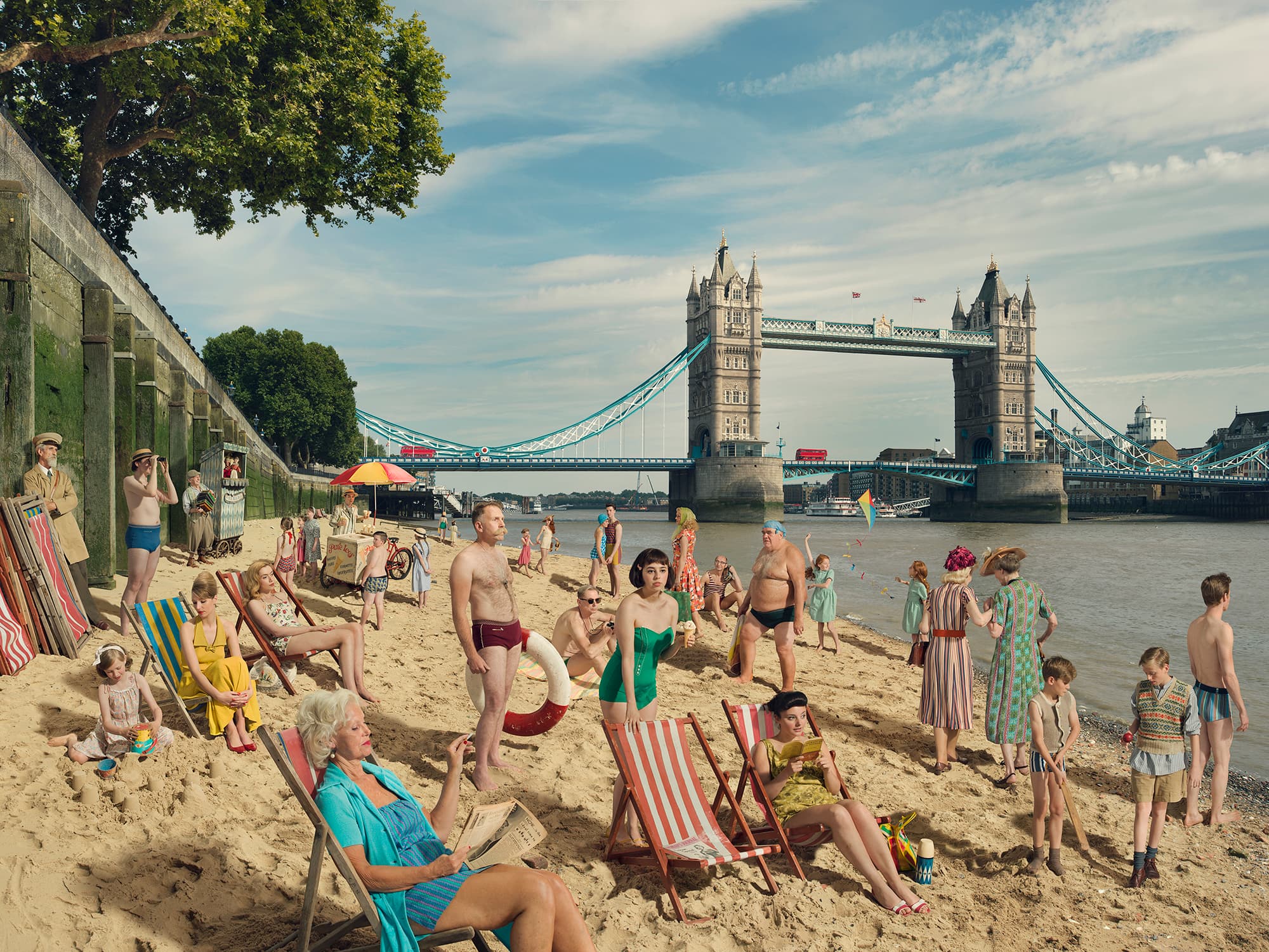
“Standing today in the shadow of Tower Bridge, one of the most iconic of London’s bridges, we would never consider that, in the 18th Century, the area was once a popular bathing spot for all classes of society, foremost, however, for women and their children escaping the claustrophobia of crowded dwellings in Central and the East End of London. Of course, it was only possible to bathe or sun-bathe for short periods of time as high tide on the Thames was every 3 – 4 hours, making it unsafe to do so. Laws prohibiting bathing were introduced in 1815 for indecency as men had started bathing in the nude.
Tower Beach, as it was called, was used for paddling, sun-bathing and swimming from 1934 to 1971, but the poor water quality once again forced closure. However, the improved quality of water in the Thames may soon mean bathing will be possible again. I chose to profile the 1950s era in my image, photographing women and children in vintage one-piece swimwear and period dresses; the men in the shot were going about their daily business against the iconic background of the Thames and Tower Bridge. Interposed are some of the entertainments of the day, Punch and Judy shows, donkey rides, and the fast food on offer, ice-cream and hot dog stalls. Most of the stalls and equipment were designed to facilitate a hasty retreat from the artificially prepared beach as the tide began to rise.”
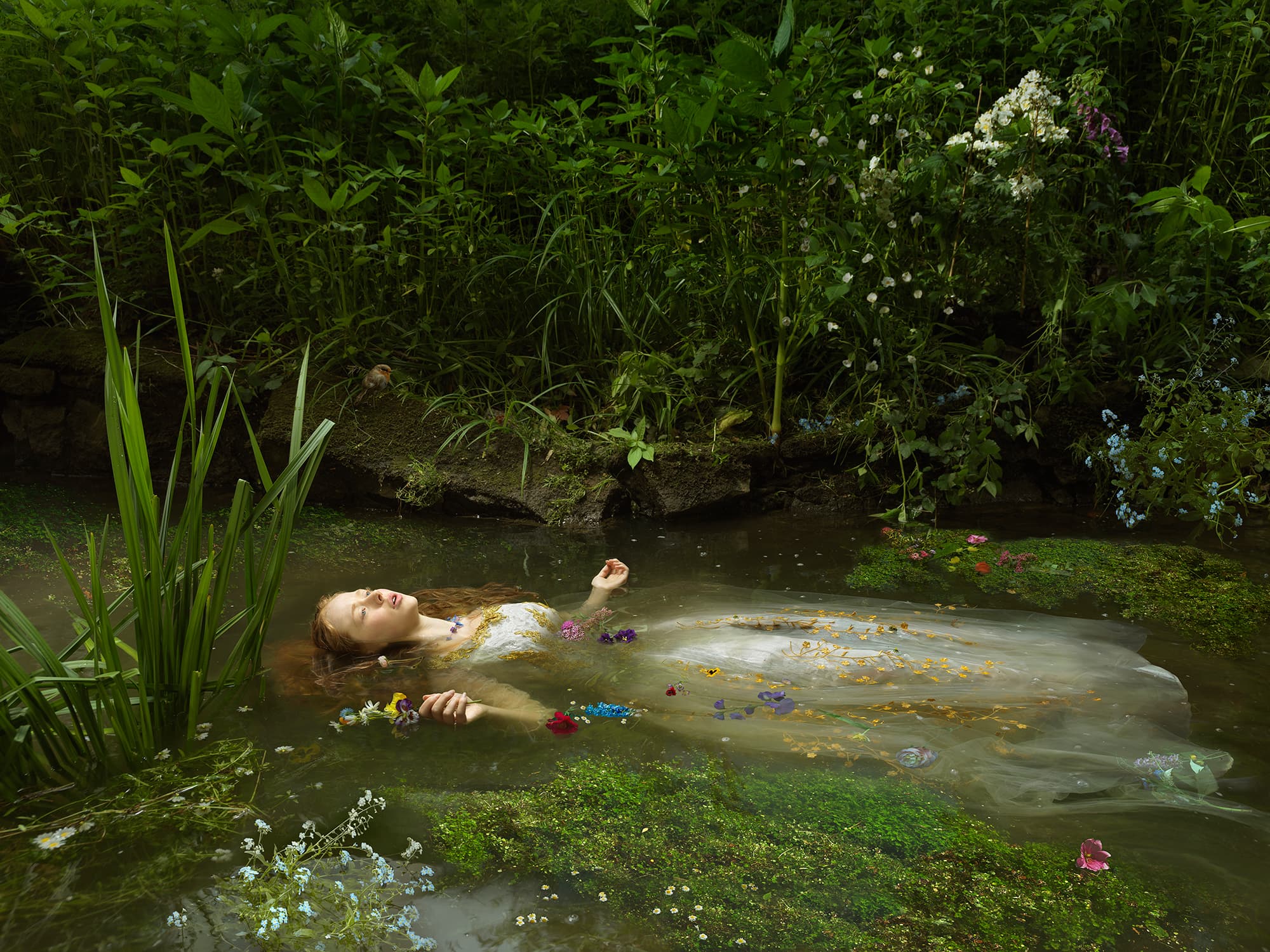
“John Everett Millais’ famous painting of Shakespeare’s Ophelia, hanging in the Tate Gallery, London, has long been one of my favourite works of art. Ophelia was a noble-woman in Shakespeare’s play Hamlet. She was frustrated in her love of Hamlet. The painting shows the beautiful and vulnerable Ophelia lying on her back in a stream after falling from a tree, still clutching flowers that she had just collected. She was singing, unaware of her eminent pending doom. Air trapped in her clothing kept her afloat until they were saturated, and she drowned.
I was aware that several other photographers had shot versions of the Ophelia painting. Although I decided to shoot the scene in its entirety, I otherwise wanted to make my image as authentic to the actual creation of Millais’ painting as possible. With the help of the vicar of the local Baptist Church, who knew the details of Millais’ stay in the locality, I was able to shoot the scene on the exact spot where he created the first part of his painting in 1851. Furthermore, recognising their importance to the interpretation of the content of the painting I replicated in my image every single flower present in the painting. In addition, I ensured that my model had similar features, hair and skin colouring to those of Lizzie. I dressed her in an antique dress onto which my stylist handstitched the gold applique to replicate the dress she wore in the painting.”
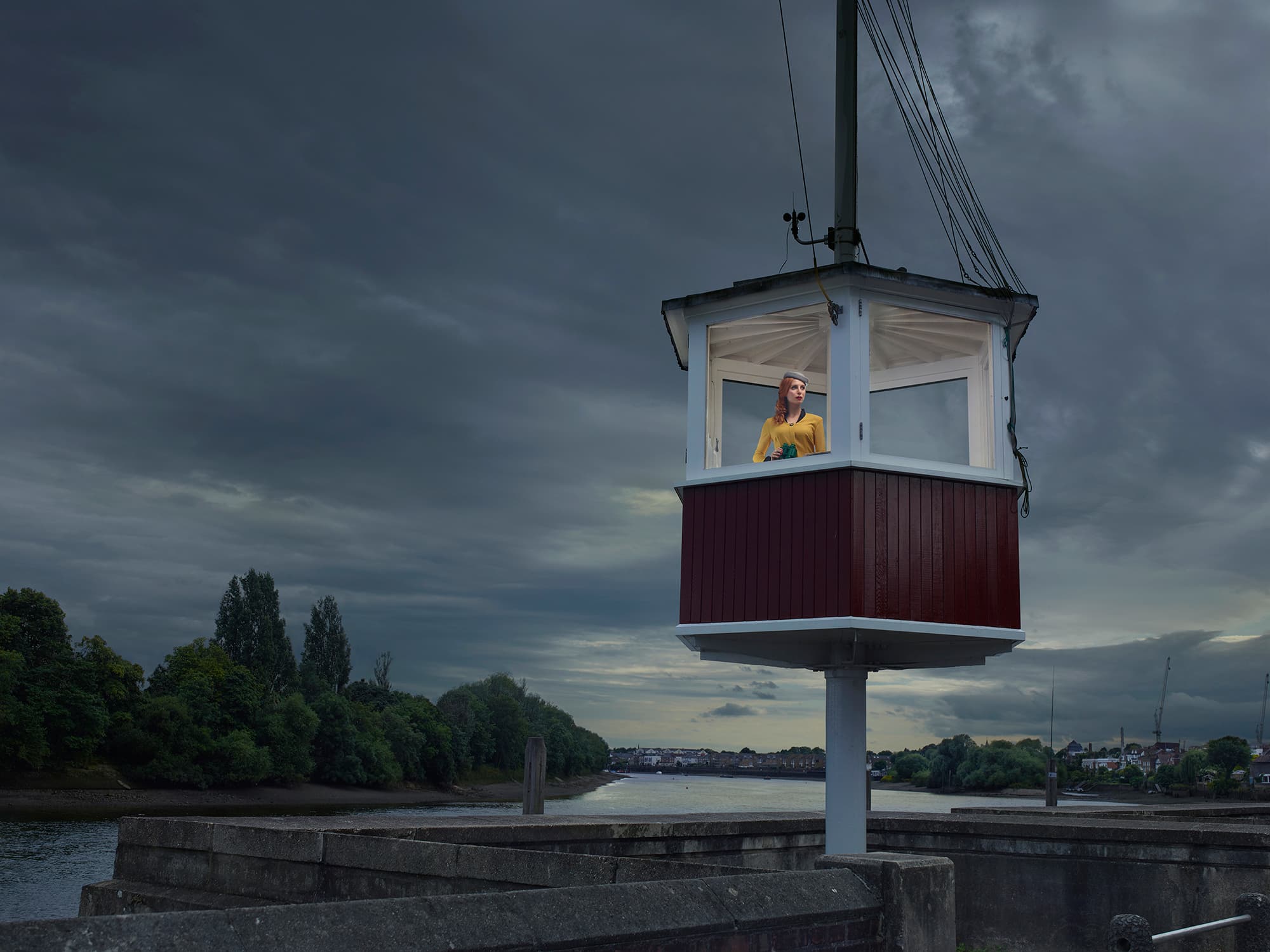
“The River Thames is a favoured location for internationally renowned boat races, not only the annual University Boat Race between Oxford and Cambridge but also The Great River Race over 21.6 miles from London Docklands to Ham in Surrey. This race attracts annually several hundred crews from all over the globe. Yachting and rowing clubs line the banks of the river. Every day of the week and especially at weekends yachtsmen and rowers can be seen enjoying their hobby, whatever the weather.
One such club, the London Corinthian Sailing Club was forced to relocate its clubhouse in the 1960s after its previous clubhouse was deemed unsafe having suffering severe bomb damage from a V-1 flying bomb during WW II. The clubhouse had to be demolished and the club moved to a nearby premises, a mere 200 metres upstream. The new clubhouse was Linden House, a gracious refurbished Georgian building in the grounds of which an award-winning race officer’s starting box was installed next to the river. From this elevated position yacht racing officials and the occasional guest, have a clear uninterrupted view along the entire race course on the Thames, especially important during races.”
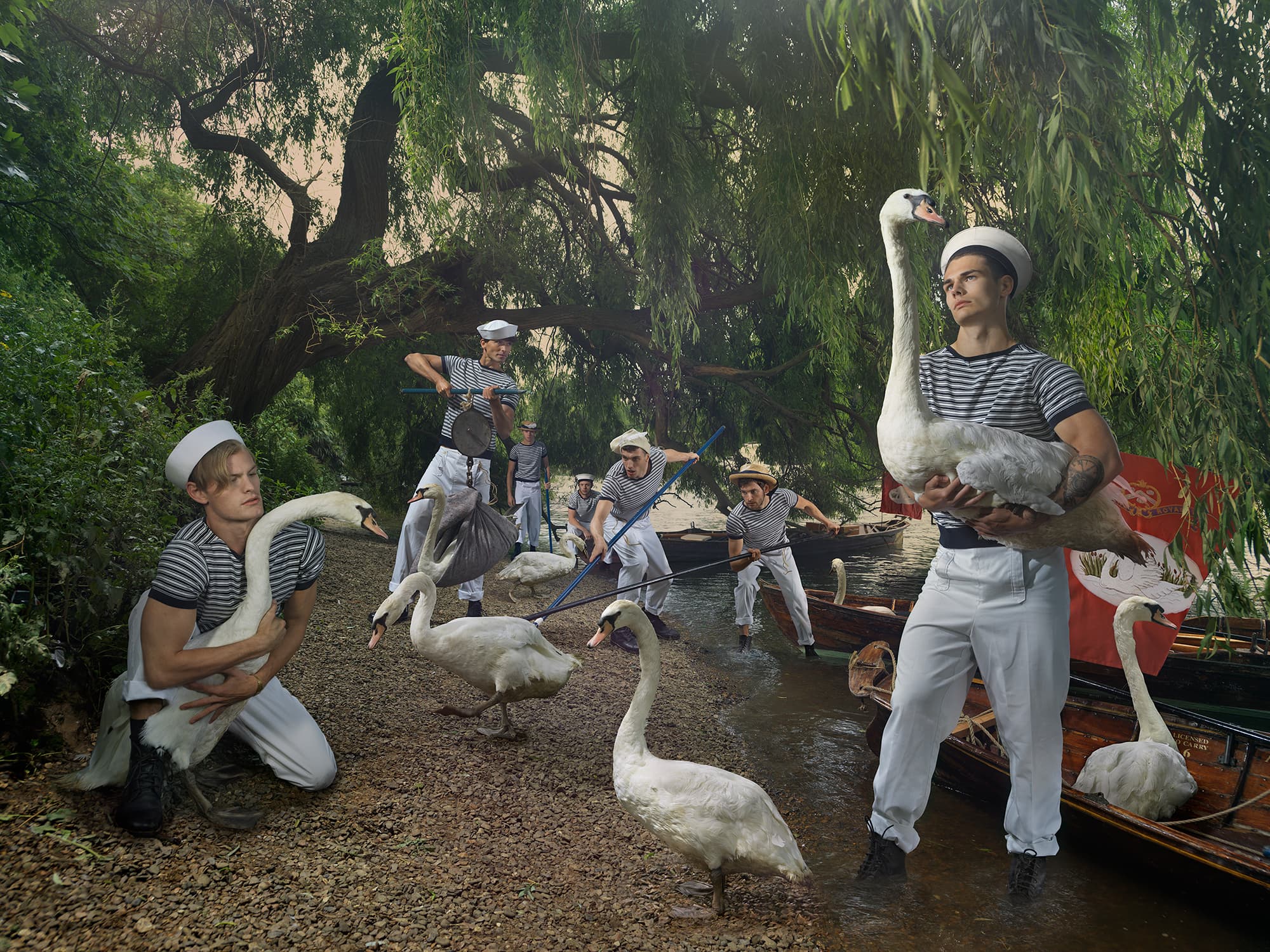
“Swan Upping became important back in the Middle Ages in Britain. Back then, not only was the mute swan a valuable commodity and regularly traded between noblemen, but swan owners were legally bound by the Crown to mark their swans with nicks in their beaks. This activity took place annually in a ceremony called “swan upping”. Although now largely symbolic, the event still takes place today on the Monday of the third week in July, and serves to monitoring the condition and number of swans on the Thames. The year’s new cygnets can be marked when they are reasonably well grown but cannot yet fly.”
See the entire series below
